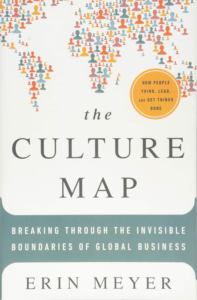The Culture Map: decoding how people think, lead, and get things done across cultures is written by Professor Erin Meyer at INSEAD, one of the world’s leading business schools.

This is not a random choice of reading material. For a long time, I have prided myself as being very internationally-minded, getting along and working well with people from other cultural backgrounds that are different from the ones I am accustomed to.
However, I experienced one small challenge recently that prompted me to introspect my own work style and seek guidance on how to work effectively with a couple of people (of very specific characteristics) from one culture that I have not had much exposure to previously.
The book moved various salient features of this culture from my blind spot to the focus. By the end of it, I gained the understanding that how the generally acceptable/preferred business style of this culture conducted in this country differs from the ones I am familiar with (e.g., UK, USA, France, Israel, Canada, Sweden, Switzerland, the Netherlands, Germany, Finland, and so on).
Agreeing with others or not, being able to understand their perspectives and behaviors is the first step towards a constructive business relationship.
In my view, facing a specific cross-culture issue, it is not useful for anyone to be judgemental on whether a culture promotes productivity or hinders collaboration or prohibits creativity or demoralising the workforce etc. Getting the work culture right is very important for building a great high-achieving and long-lasting organisation. That is another topic to be discussed separately. For an individual, adaptability within the legal and moral boundary is vital for an international career. To me, the key practice is to: put more effort on understanding rather than being understood, ask questions, listen, try to see from others’ angles, accommodate within reason, build the foundation. If all fails, breathe deeply and try again with good intention.

Meyer examined the culture differences along eight axes (shown in the figure above). For example, in the illustration above from her article, she created a culture map across these eight axes, each of which is a culture aspect vares from one extreme on the left to the opposite extreme on the right. She recommended analysing multiple cultures in one map to see how they differ and understand how this difference might impact people’s behaviours. More resources in her website are available to explore.